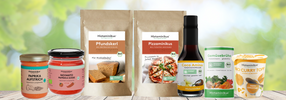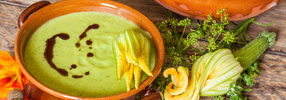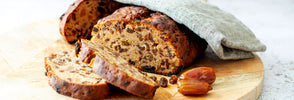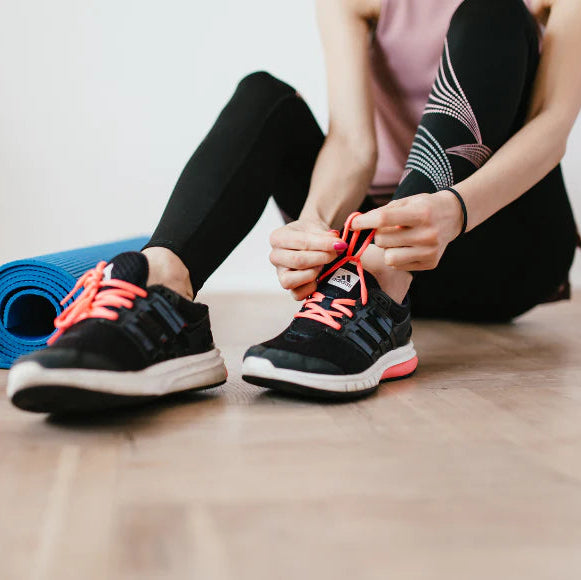
Sport in histamine intolerance
Certainly you have already asked yourself the question of whether you Do sports with a histamine intolerance as normal can. Or you have Experience symptoms after a sporting activity And now ask yourself which sports are suitable for histamine intolerance.
As early as 1935, researchers demonstrated that Physical activity and the histamine level in a close connection stand. An animal study showed that the Increase in histamine levels in physical activity depends on the intensity and duration of the activity performed (1).
Decades later, research confirmed that the same effect can also be observed in humans. So there is definitely definitely a connection between physical activity and histamine -related symptoms.
But no sport is not an alternative either
Our human body is made for a life with movement. If you move too little, the body expires. Movement has a positive impact on various processes and functions in the body and reduce the risk of diseases. Your intervertebral discs, for example, are only supplied with nutrients by movement. In the meantime, of course, there are countless studies that show the positive effect of sporting activities on your physical and mental health as well as your mindset.
For example, a study has shown that with participants who had exercised between 2.6 and 4.5 hours a week, the risk of death was 40 percent lower than those who did not physically work at all. (2) Physical movement is therefore essential for your entire health and even slows down your aging process. No sport is therefore not an alternative.
What is the connection between sport and histamine -related symptoms?
1. Histamine release from the mast cells
Research has shown that The histamine release triggered by sports not the result of a typical allergic reaction is. Instead, histamine is released due to training -related triggers (3).
The skeletal muscles are one of the areas in the body that contain a large number of H1 and H2 histamine receptors (4). So if mast cells that are embedded in the skeletal muscles release histamine, it binds to these receptors and thus triggers a histamine reaction (5).
Mast cells are usually activated by inflammation in the muscles as a result of sport. Highly intensive training - and even moderately intensive training in susceptible people - causes tiny cracks in the muscle fibers that trigger a mast cell reaction And thus cause a training -related histamine release (6).
In fact, can As a result, symptoms such as B. low blood pressure, which arises after sport due to the caused vasodilation (relaxation of the blood vessels and reduction of the pressure of the blood that flows into the vital organs). (7)
The Histamine reaction Is too One of the most common reasons for dizziness and weakness after sport, even with healthy young adults; In people with histamine intolerance, however, these symptoms are even more pronounced and can last longer and generally cause panic and fear of sport.
2. Training equipment as histamine trigger
It is often overlooked that some of the devicesthat we use during training are contaminated with histamine -free or histamine -containing fabrics. Cheap plastics, PVC, chemicals and straight dazzling, colorful training mats can contain toxins materials and dyes that Symptoms trigger can. It is best to check your yoga mat or training mat for cheap or harmful material. Absolute bargains in particular can harm more than help you in the long run.
3. unfavorable environment as histamine trigger
Your surroundings can have a major impact on your stress level and histamine levels. The following points in your area could trigger histamine symptoms, for example:
- An overheated or too cold studio
- A trainer too loud
- Too loud music
- Bright or flickering lights
- Smell of rubber mats (gym) or incense (yoga studio)
- Poorly ventilated studio (too little oxygen)
- Walking on a heavily driven road
All of these things can drive up your histamine and inflammation level before you even started training. If you cannot change the environment or weaken the effects on you, it may be best if you carry out your training in your own 4 walls or outside in the great outdoors.
Which sports are suitable for histamine intolerance?
Studies show that aerobic training such as running, cycling or kickboxing can significantly increase the histamine content in the body. However, this only seems to be the case in endurance sports - moderate strength training does not seem to have this effect. So if you suffer from histamine intolerance, you should prefer calmer sports such as strength training, Pilates or yoga.
Interesting fact: Cardio training releases histamine and other inflammation substances, but the effect only takes temporary (up to 72 hours). This is also a reason not to do too much and rest in the next three days after good training. After these three days, the training then has an anti -inflammatory effect on the body, which is why moderate sport is also recommended for histamine intolerance.
YOGA
Yoga is always called that it is suitable for histamine intolerance, but it also depends on What kind of yoga you do. We all have a different level of fitness - some can be in an hour without much difficulty Advanced yoga Fall, while others may not even endure a single movement. So you should always Pay attention to your own fitness level And only carry out these exercises that you can also manage.
Yoga can one calming effect on body and mind have focused on breathing and relaxation. There are numerous Yoga appswith which you Soothing yoga sessions Can do it comfortably from home.
Did you know that one of the many studies on yoga showed that women who regularly practice yoga to practice 41 % lower stress marker show as non-yogis? And above all, significantly less inflammation. This is of great importance for us with histamine intolerance. So integrate yoga into your regular training as often as you can.
Walking / walking
Walking and walking is another Good way to move without suffering without histamine symptoms. The WHO recommends a healthy adult 150 minutes of movement of moderate intensity per weekto stay healthy and fit. Long Walks in the great outdoors Or in the forest are the best way to keep your body fit and to supply it with the necessary oxygen. In summer you should too often run barefoot over a meadow Or visit a barefoot path.
Pilates
Pilates is also well suited for histamine intolerance. Just like yoga, this is about "conscious movements“. Pilates promotes healthy posture, strengthens the deep muscles and also contributes to Coping with stress at. Pilates is a full body training that is gentle and intense at the same time. It improves yours Coordination, strength and balance. If you have never done Pilates, please start with very simple and easy exercises and slowly increase.
Strength training
Power exercises are another important part of physical activity. Of course, you shouldn't overdo it here either. Lighter weights, lower repetitions and exercises with low to medium intensity are very good training with histamine intolerance. Incidentally, an evaluation of a total of 16 different studies has shown that Targeted muscle training The risk prematurely Diseases How stroke, diabetes and cancer die to die up to 17 percent reduced. (8)
What else you can do
Take quercetin
Quercetin has one Histamin -reducing effect and can help you with physical activity To curb histamine symptoms. An 8-week study with male badminton players showed that 1000 mg of this bioflavonoids delayed muscle creation. So it could be a good idea to regularly take a dietary supplement with quercetin and to include many foods with quercetin in the diet. We would be happy to recommend ours as a dietary supplement Basicswhich contains quercetin. (9)
Meditation after training
meditation comes the same to a natural antihistamine And is therefore ideal for connecting to any kind of training. In addition to the Running of histamine levels Is it interesting that meditation even becomes one faster recovery can contribute. In a study published in the British Journal of Sports Medicine, researchers were able to reduce the lactate mirror in the blood by meditating after training. Lactate Is the fabric that Burning feeling in the muscles caused and can be a big problem for runners - or even power walker. (10)
Low -histamine diet
The way you eat before and after training can have a big impact on how your body reacts to training. And not just on the day of the training. When you your Inflammation and histamine levels with an anti-inflammatory and histamine-low diet Low, you can do your sports Keep histamine symptoms very low and even do more intensive sports. The Histaminic foods Can help you with a low -histamine diet.
Antihistamines - not the best solution before sport
A study by the University of Oregon from 2016 provides evidence that speak against the use of antihistamines in training -induced histamine reactions. The reason for this is that part of the recreational process in sports through mast cells and the subsequent histamine release takes place (11). The researchers therefore came to the conclusion that the importance of the histamine distribution during recovery after sport must not be neglected, even if histamine has a very negative aftertaste with histamine intolerance (12.13). So if you are currently taking antihistamines before sporting confirmation, you should talk to your doctor about alternatives before you simply put on the prescribed medication.
Now we hope you enjoy your next fitness training. Because now you know exactly which sports are suitable for you and what measures you can take to get your histamine symptoms under control during training.
Discover new products, bestsellers and many more low-histamine products now
In our online shop you will find all the everyday companions that you need for your histamine -low diet. You can finally enjoy food carefree. From baking mixes, soups and sauces to nutritional supplements, you will find everything the Histamin -poor heart desires in our online shop.
Collapsible content
SOURCES
(1) Appearance of Histamine in the Venous Blood During Muscular Contraction. Anrep GV, barsooun gs. J Physiol. 1935; 85: 409–20.
(2) https://www.mayoclinicprocedings.org/article/s0025-6196(21)00475-4/fulltext#%20
(3) The Intriguing Role of Histamine in Exercise Responses. Meredith J. Luttrell and John R. Halliwill. Exerc Sport Sci Rev. 2017 Jan; 45 (1): 16–23.
(4) Effect of H1- and H2-Histamine Receptor Blockade on Postexercise Insulin Sensitivity. Pellinger TK, Dumke Br, Halliwill jr. Physiol Rep. 2013 Jul; 1 (2): E00033.
(5) Postexercise Hypotension and Sustained Postexercise Vasodilatation: What Happens After We Exercise? Halliwill JR, Buck TM, Lacewell an der, Romero Sa. Exp Physiol. 2013 Jan; 98 (1): 7-18.
(6) Elevation of Histidine Decarboxylase Activity in Skeletal Muscles and Stomach in Mice by stress and Exercise. Ayada K, Watanabe M, Endo Y. at the J Physiol Regul Integr Compy Physiol. 2000 Dec; 279 (6): R2042-7.
(7) Barrett - o’keefe, Z., Kaplon, R. E. and Halliwill, J.R. (2013), Sustained Postexercise Vasodilation and Histamine Receptor Activation Following Small Muscle Mass Exercise in Humans. Experimental Physiology, 98: 268-277. Doi: 10.1113/Expphysiol.2012.066605
(8) https://bjsm.bmj.com/content/56/13/755
(9) Daneshvar, Poya, et al. "Effect of Eight of Quercetin Supplementation on Exercise Performance, Muscle Damage and Body Muscle in Male Badminton Players." International Journal of Preventive Medicine, MedKnow Publications & Media PVT Ltd, Apr 2013, www.ncbi.nlm.nih.gov/pmc/articles/pmc365027/
(10) Solberg EE, Ingjer F, fetch a, et al. Stress Reactivity to and Recovery from A Standardized Exercise Bout: A Study of 31 Runners Practising Relaxation Techniques. British Journal of Sports Medicine 2000; 34: 268-272. http://bjsm.bmj.com/content/34/268.short https://physoc.onlinelibrary.wiley.com/toc/1469445x/0/ja http://www.ft.com/cms/0/c6797ec4-682d-11e5-a57f-21b8f7d973f.html#axzz3nmikop7z
(11) Histamine receptor Blockade Reduces Blood Flow But not muscle glucose uptake during postexercise recovery in Humans. Emhoff Ca, Barrett-O’keefe Z, Padgett RC, Hawn Ja, Halliwill jr. Exp Physiol. 2011; 96: 664–73.
(12) Evidence of a Broad Histamine Footprint on the Human Exercise Transcriptoms. Steven A. Romero, Austin D. Hocker, Joshua E. Mangum, Meredith J. Luttrell, Douglas W. Turnbull, Adam J. Struck, Matthew R. Ely, Dylan C. Sieck, Hans C. Dreyer, John R. Halliwill. The Journal of Physiology, 2016.
(13) Roles of Histamine in Exercise-IndUced Fatigue: Favouring Endurance and Protecting Against EXHAUS. Niijima-yaoita f, tsuchiya m, ohtsu h, et al. Biol Pharm Bull. 2012; 35: 91–7.
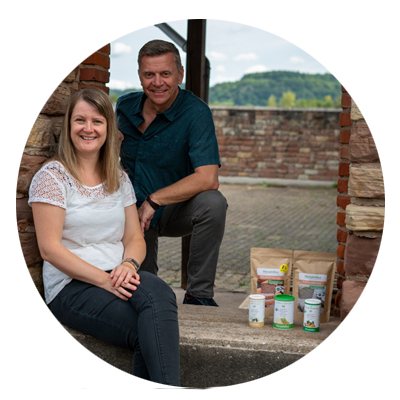
From those affected for those affected
We are Thomas and Michaela Zinser, founder of Histaminikus.
Because of the own histamine intolerance of Michaela and our son, we founded Histaminikus. The frustration does not find any suitable histamine food has spurred us to develop low -histamine food.
We would like to give you back a piece of quality of life. Feel free to look around with us.
Kind regards
Thomas and Michaela

